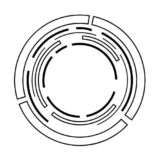What bootcamps get right, what videos get wrong, and how AI can help us scale smarter learning
🎬 The Onboarding Status Quo: Click, Watch, Repeat
In many large organizations I’ve worked with, onboarding begins with a playlist.
AI-narrated videos. Self-paced modules. LMS checklists.
Designed to orient new hires, technical and non-technical alike, to systems, policies, and culture.
There’s often a layer of general onboarding covering compliance, company values, and tools. This is followed by role-specific training for engineers, product managers, and others. Technical onboarding might include tooling, product walkthroughs or infrastructure overviews, sometimes even team-specific workflows.
But while the content may vary, the format rarely does.
And that format feels less like enablement and more like compliance.
These onboarding experiences may check the box, but they often fail to build the things that actually matter.
Confidence in your environment.
Competence in your tools.
Connection to your work.
And while LMS dashboards show 100 percent completion, they can’t show whether anyone understood what they watched or whether they’ll remember it next week.
🧭 What’s Missing? (And It’s Not Just for New Hires)
Whether you’re onboarding a new hire or helping a seasoned engineer shift teams, learning doesn’t happen from watching. It happens through doing, asking, and connecting.
From my experience leading technical enablement programs, I see recurring friction points:
- Too Passive: Videos are a lean-back experience. They don’t support interaction, exploration, or curiosity, especially for engineers and scientists who learn by experimenting.
- Hard to Maintain: Even with AI narration, video updates require coordination, editing, and production. Updating a paragraph in a doc is much faster.
- Detached from Workflow: Videos live in the LMS. The real work happens in GitHub, Jupyter, dashboards, and Confluence. When knowledge lives outside the flow of work, it gets missed.
Meanwhile, the knowledge new hires and internal movers actually need—like code review etiquette, documentation conventions, team-specific standards, and architecture decisions—is often outdated, inconsistent, spread across multiple tools, and not clearly owned or maintained.
Even when managers thoughtfully curate onboarding docs, those materials quickly age, and employees are left stitching together their own answers.
🏕️ What Bootcamps Got Right
At one firm I worked with, we ran a 10-week full-time onboarding bootcamp for campus hires. Newly hired engineers and quants flew in from around the world and learned from internal SMEs. They pair-programmed, collaborated across departments, and worked on production-adjacent projects.
It was high-touch, high-context, and deeply immersive.
And it worked because it aligned with how people actually learn.
Active practice.
Real-time feedback.
Embedded mentorship.
Contextual knowledge.
But it also required substantial time, talent, and financial resources.
Most organizations can’t scale that kind of onboarding.
🤖 The Middle Ground: A Smarter Onboarding Companion
That’s what I’m exploring, a lightweight, embedded, intelligent learning assistant. Not a chatbot. Not a playlist. But a knowledge-aware system that lives inside documentation and supports learning as it happens.
Here’s what I imagine:
✅ Context-aware Q&A
Imagine highlighting tf.keras.layers.Dense in a code snippet and asking,
“What’s the standard activation function we use for this layer?”
And getting an answer based on your team’s internal style guide, not just Stack Overflow.
✅ Role-based learning paths
Suggesting what to read, watch, or try next based on your role, experience, or current task.
✅ Just-in-time coaching
Offering nudges or micro-practice when documentation alone isn’t enough.
✅ Documentation hygiene
Promoting tagging, ownership, and update habits. Making KM a shared responsibility, not an afterthought.
✅ Embedded interaction
No LMS detour. Just support where the work happens—Confluence, Notion, GitHub, Slack, or internal portals.
This kind of assistant doesn’t replace a manager or mentor. It offloads repetitive questions, surfaces hidden knowledge, and makes documentation a learning tool, not just a reference.
🤝 Bridging the KM and L&D Gap
In many organizations, Knowledge Management and Learning and Development operate on separate tracks. One builds the wiki. The other builds the training.
But learning doesn’t care which team owns the file.
It cares about access, structure, and timing.
That’s why I believe there’s an opportunity, not to invent a new role, but to close an existing gap. To bring enablement and documentation into alignment. To treat documentation not just as storage, but as scaffolding for learning.
⚠️ Staying Grounded: This Is an Exploration, Not a Revolution
This isn’t a product launch. I’m not claiming to have solved onboarding or knowledge management. I know that tools like Microsoft Copilot, ServiceNow, and internal LLM pilots are tackling similar challenges at enterprise scale.
But as someone who’s designed technical learning programs and led onboarding for engineers, data scientists, and analysts, I want to understand what it takes to build something useful, flexible, and contextual from the ground up.
Over the next 10 weeks, I’ll be prototyping a Retrieval-Augmented Generation (RAG) system that connects documentation to an AI assistant. I’ll start with open technical content, like Python docs, and layer on learning principles.
I’ll explore:
- How to process and embed docs
- How to retrieve and ground responses
- How to evaluate trustworthiness and relevance
- How to wrap it all in something usable
And I’ll document the journey here, sharing what works, what doesn’t, and what I learn along the way.
📍Final Thought
Great onboarding, and ongoing enablement, isn’t about how many hours of video someone watches. It’s about how supported people feel when they’re trying to learn something new.
It’s about lowering the barrier to asking questions.
It’s about meeting people in the flow of work.
It’s about organizing knowledge in a way that invites interaction.
This week, I’m scoping my prototype and building a foundation.
Next week, I’ll dive into document processing and what makes technical content AI-ready, or not.
Let’s see where this goes.
